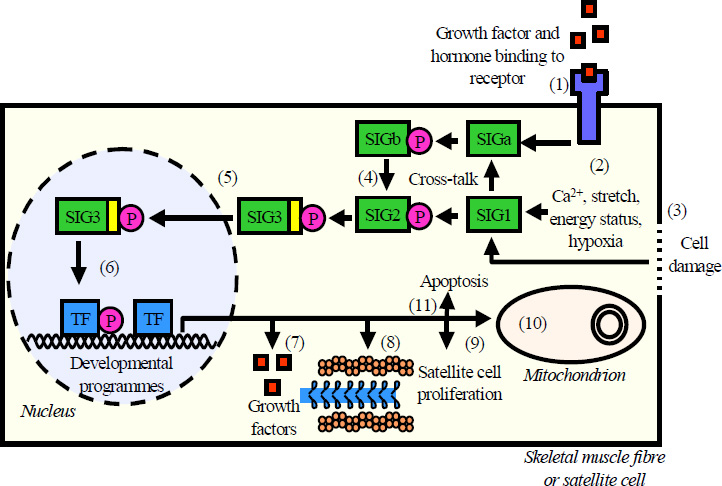
Figure 1. An overview of exercise-induced adaptation signalling and gene regulation in skeletal muscle. Exercise activates signal transduction pathways via (1) growth factors and hormones binding to membrane and nuclear receptors, (2) Ca concentration changes, mechanical stretch, energy status, hypoxia and (3) cell damage/injury. Numerous, sometimes cross-talking signal transduction proteins signal mainly but not exclusively by covalent phosphorylation (4). In a final step, a nuclear localisation signal (yellow) is activated and translocated into the nucleus (Cyert, ). Inside the nucleus (6), the signalling protein either acts as a transcription factor itself or it activates transcription factors that will bind regulatory DNA sequences. Skeletal muscle genes are controlled by several regulatory elements and a cross-talk with developmental programmes is likely. Exercise-induced effects include (7) expression of growth factors, (8) contractile proteins, enzymes and other functional proteins, (9) satellite cell proliferation and donation of nuclei to skeletal muscle fibres, (10) mitochondrial biogenesis, and (11) apoptosis.
